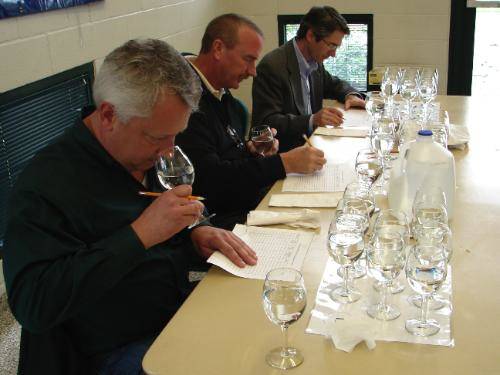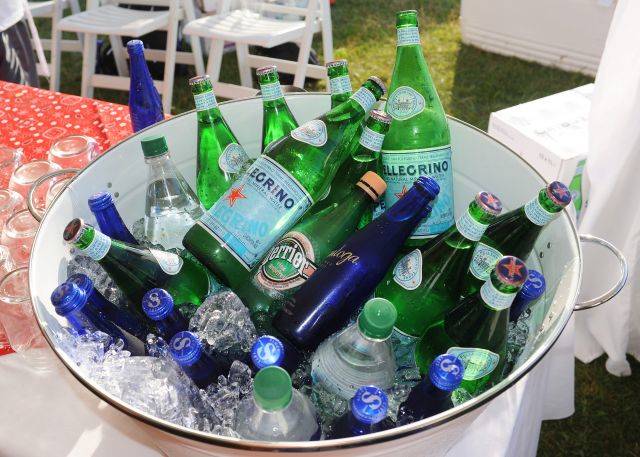The Art of Water Tasting
As small children, in school during chemistry class, we all have learned that each molecule of water is made of two atoms of hydrogen and one of oxygen. We have also learned to play with water guns and water filled balloons, at the moment that was, to us, the best appeal water could have. Growing up we have discovered how much our bodies need water, real natural fuel for their proper functioning. Water is our main resource of energy, it reaches each cell so we can safely say that it is our essence.
Our bodies contain 60-70% of water. Our blood is rich in water as the muscles, lungs, and brain also are. We then need to drink a lot of it in order to maintain the right body temperature, to nourish our organs, to transport oxygen to all our cells, and to remove waste. The benefits of water aren’t related to physical health, but also to spiritual wellness.
Water is the big purifier. According to religion: we wash away our sins, we cleanse our wounds, and our tears comfort us. At the same time, water is fun, especially during the summer at water parks, where a giant slide leads us into a large swimming pool. This too is a form of therapy. So water is also enjoyment, when we have fun, when we need to relax and when we need to be in touch with nature. A new way to enjoy the properties of water is simply by tasting it.
As for olive oil, whiskey, and more notoriously wine, the possibility of tasting water gives us the chance to learn to appreciate all its sensorial characteristics. We then become real connoisseurs and not just simple consumers. At first the idea of a water tasting might sound strange, as the general idea is that water is just water and that there are no differences between them besides them being either flat or sparkling. But by training all our senses we will learn to extrapolate, and appreciate all its unique qualities. After having gained this ability we will be able to apply our new knowledge in the selection of food and wines that go better together with the selected water.
Before starting it’s important to chose the right glass: different materials, such as terracotta, glass or plastic, influence the taste of what they contain. The required glass must be of crystal as this material, perfectly transparent, has a unique reactivity to light and shadows. Once the material is defined it’s the turn of the shape. Specific glasses have been created for tastings, in order to let the tasters appreciate each nuance of the water. Dealing with teo types of water, there are two shapes of glasses, one for still and one for sparkling. What hey have in common is that they are stem-less and that the rim is particularly thin. The glass for still water is has a wide mouth which allows the nose to move in closer towards the water and perceive its’ delicate aroma. The one for sparkling water, has a narrow mouth, just like a champagne glass, in order to let the taster drink smaller sips. Naturally glasses must be properly cleaned before proceeding with the tasting, first in warm water, then, if they are brand new, in vinegar to remove grease and dust. Afterward, they must be rinsed in hot water and then dried with a cloth that doesn’t leave any residue behind, the ideal material is linen.
The first important thing to know before a water tasting is that it’s important to follow meticulously the sequence and the techniques that are suggested, upon previous tries, by the experts. The first sensation that must be evaluated is the freshness of the water that must be qualified by drinking a sip right after opening the bottle and pouring it in the glass. The immediate reaction varies greatly in intensity and gives a pleasant sensation to the mouth which is filled the freshness of the water. After having emptied out the glass and rinsed it again it’s time to move on to a visual analysis to classify its limpidity, to determine the absence of external substances, of anomalous colors and its effervescence. First raise the glass to eye level and then lower it so as to observe the liquid from above, in order to give a horizontal and a vertical analysis to the water. We proceed to bringing the glass to the nose and breathe in deeply at regualr intervals. This action must be repeated several times and, if possible, with closed eyes in order to concentrate more on the receptive power of our nose in distinguishing aromas.
The fourth phase of our analysis is the tasting that must be performed in two separate stages. The first one allows you to determine the water’s acidity, sapidity, structure, lightness and mouthfeelin order to do that you must sample 15 ml. Of water by letting it rest on the tongue and then distribute it around the mouth all the way to the back of the tongue. The second phase determines the water’s balance and persistence. Take a second sip of the same amount of water, then let it rest on the tongue. Breath in through the nose and let some air reach your mouth. Lead the water to the back of your tongue and swallow. Rinse your mouth with tap water and proceed to the next sample. If you have few waters to taste it’s better to start with the lighter ones and proceed to the more complex ones. If you need to takes notes, make sure you have either a pre-printed score card, or scrap paper, if the tasting is informal.
Once you have mastered the art of water tasting you can proceed to pairing it with the right wine and harmonize the qualities of both. To practice sip alternately the two liquids and find the two that induce a sequence of sensations that follow and overlap each other, without either overpowering or annulling each other. Generally speaking a full-bodied wine will be paired well with a strong, fresh water, and a soft wine with a light water. To blend properly, with the wine, the water must be either equal, or slightly above or below in intensity with respect to the wine.








































i-Italy
Facebook
Google+
This work may not be reproduced, in whole or in part, without prior written permission.
Questo lavoro non può essere riprodotto, in tutto o in parte, senza permesso scritto.